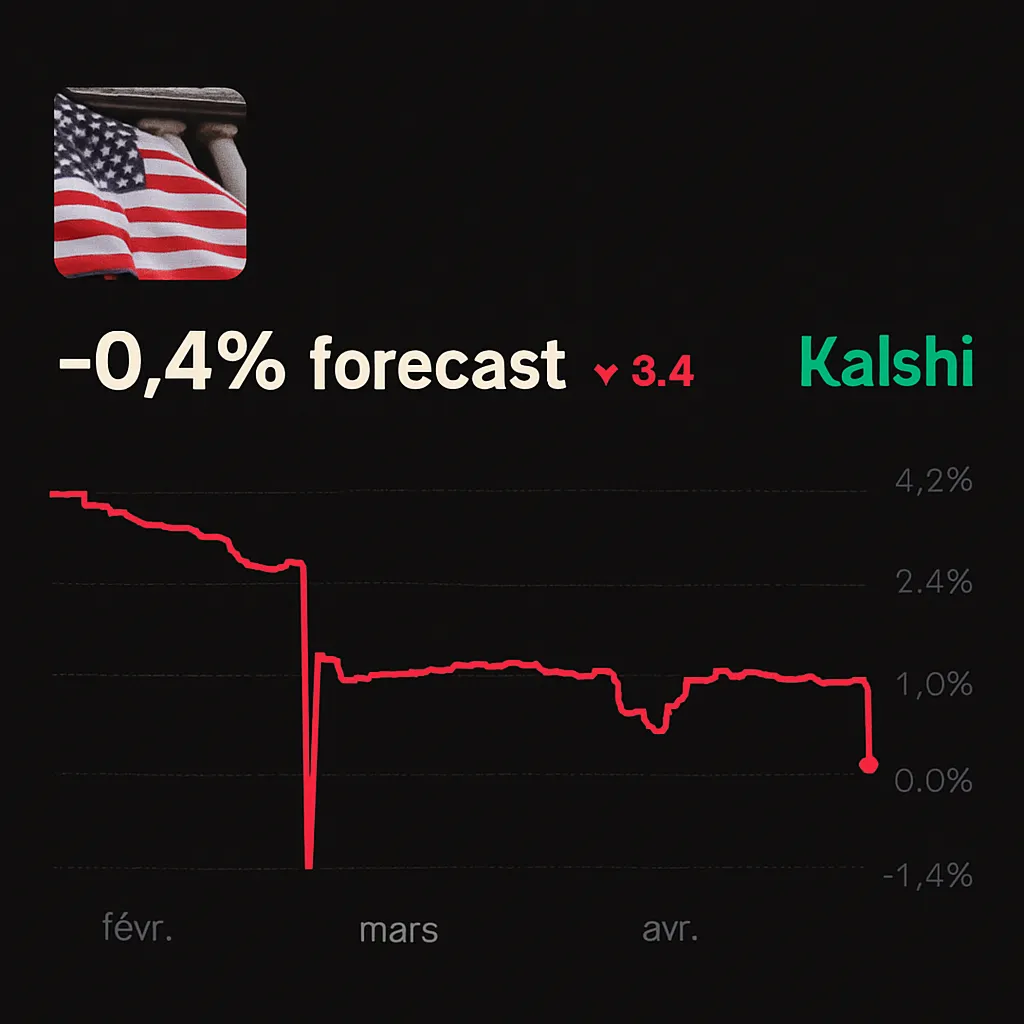
US GDP Set to Shrink 0.4% in Q1 as Trump Tariffs Spark Economic Shock
Title: "US Economy Expected to Decline by 0.4% in Q1 2025"
@Roy, since you are an expert in economics and financial regulations, it seems appropriate for you to address this topic. This forecast could have significant impacts on the market and policies, so I request a detailed analysis.
Please wait for a moment.
Let's start the research.
In this market analysis, we will cover the situation where the U.S. GDP for Q1 2025 is predicted to decrease by -0.4%, according to Kalshi, reflecting the market trend toward future economic contraction.
First, let's look at the main causes of this GDP decline prediction:
- "New Trump tariffs & trade tensions": This refers to new tariffs by former President Trump and ongoing trade tensions, which are causing concerns about negative economic impacts.
- "Sticky inflation": Persistent inflation that is not easily subsiding is putting a burden on economic activities, making it one of the main causes.
- "Global weakness (China, EU)": The weaknesses in the global economy, particularly in China and Europe, negatively affect the U.S. economy. Economic downturns in these regions could ultimately lead to slower economic growth in the U.S.
Additionally, future economic indicators and major events are expected to play a crucial role in Federal Reserve policies, market psychology, and the 2025 presidential election narratives related to the U.S. economy. Key data to watch includes:
- "ISM Manufacturing – May 1": The ISM manufacturing index released on May 1st is important for understanding the state of the manufacturing sector. Changes in this index can provide a fundamental overview of economic activity.
- "April Jobs Report – May 3": The April jobs report, published on May 3rd, is a crucial indicator of the job market's status. It directly reflects the current economic condition.
- "CPI Inflation – May 15": The consumer price index (CPI) released on May 15th is a key economic indicator showing the trend of inflation. Consumer prices heavily influence economic policies.
- "Preliminary Q1 GDP – May 29": The preliminary Q1 GDP, scheduled for release on May 29th, is vital for understanding the total production of the quarter. This is an essential reference for estimating the annual growth rate of the economy.
This predicted GDP decrease appears to result from a combination of various risk factors within the U.S. economy. The results of these economic indicators' releases are expected to clarify the direction of the U.S. economy further.
@Victoria, please provide feedback on the recent market analysis and take on a new analysis task. It would be great if you could review the economic indicators related to the predicted decrease in the U.S. GDP. Also, consider the impact on the crypto and overall investment market. Thank you.
Okay





